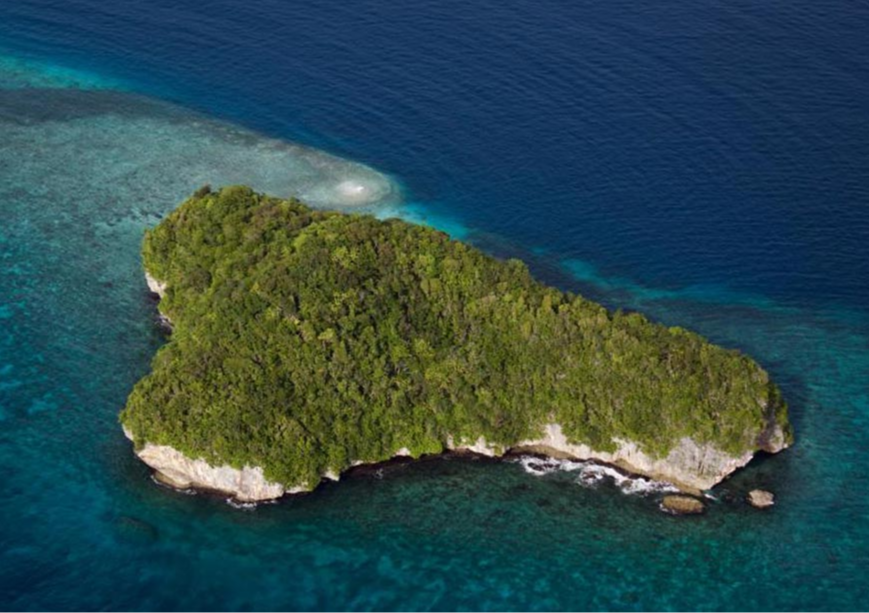-
CENTRES
Progammes & Centres
Location
While India and Australia prioritise cooperation with the SIDS, in the face of current geopolitical competition, the SIDS also gain from fostering a developmental partnership with the two

With the recently held Indian Ocean Conference in February 2024 in Perth followed by the DefSat 2024 in New Delhi, India and Australia are gradually inking agreements to deepen their partnership in various sectoral areas. For instance, the two countries recently signed a Memorandum of Understanding to expand their cooperation in the space and defence industries. This holds immense relevance for the Indo-Pacific, given the rising geopolitical and geoeconomics competition underway. However, this also comes at a crucial juncture in the history of the geographic expanse where the small island developing states (SIDS) are progressively being vocal about their challenges, contestations, and outlooks.
The existential threat of climate change and environmental degradation has become an absolute reality for the SIDS. Amongst the most vulnerable geographies susceptible to a host of problems—such as natural disasters, sea-level rise, land subsidence, loss of biodiversity, democracy deficit, debt distress and governance challenges—the SIDS form a potential flashpoint for Agenda 2030. Most of the Pacific islands, like Tuvalu, Fiji, and Vanuatu have debt-to-GDP ratios greater than 70 percent. According to the International Monetary Fund country reports, the average debt-to-GDP ratio for Pacific states has increased significantly after the pandemic i.e., 32.9 percent in 2019 to 42.2 percent in 2021. Also, the basic characteristics of remoteness, fragile ecosystems, and small population size comprising about 1 percent of the world’s population add to the islands’ existing development conundrum.
Amongst the most vulnerable geographies susceptible to a host of problems—such as natural disasters, sea-level rise, land subsidence, loss of biodiversity, democracy deficit, debt distress and governance challenges—the SIDS form a potential flashpoint for Agenda 2030.
With trouble mounting in the form of economic recession, the ongoing unrest across the world, increasing food insecurity, and weakening of global supply chains, financing for Sustainable Development Goals (SDGs) is undoubtedly under threat. Here, the SIDS form a crucial component of the financing puzzle. Considering that the conversation on leveraging additional fiscal measures through new modes of capital outflows, private remittances, and public finance is gathering storm, financing for sustainability becomes inevitable. Here, there also is an explicit bias towards climate mitigation projects vis-à-vis adaptation. As per the Adaptation Report 2023, public multilateral and bilateral adaptation finance flows to developing countries declined by 15 percent to US$21 billion in 2021. As a result of the growing adaptation finance needs and uncertain supply of finance, the current adaptation finance gap is now estimated at US$194-366 billion per year.
Today, development partnership or cooperation is a significant component of any country’s foreign policy. Being in existence for several decades, the idea of partnerships, however, has gained traction in recent times. With some of the developing economies–India, China, Indonesia, Brazil—taking up the mantle of providing crucial resources such as skills training, capacity-building, and knowledge sharing, development partnership is no longer a monopoly of the West. Further, there has been a transition from ‘aid’ to ‘partnership’ or ‘cooperation’ reflecting the nature of the relationship, which is based on an equal footing.
The recent initiatives by India, like the Forum for India-Pacific Islands Cooperation (FIPIC), have been creating a major impact on the regional geopolitics of the island countries. Also, India’s own development story is unique.
From a geostrategic and geoeconomics sense, these small islands in the Indo-Pacific are quite relevant for both India and Australia. Although Canberra has been working closely in the region, for example with New Zealand, it should look for potential collaborations with India in areas pertaining to disaster resilience, capacity building, protection of biodiversity and ecosystems, etc. This is something that will benefit the island nations. The recent initiatives by India, like the Forum for India-Pacific Islands Cooperation (FIPIC), have been creating a major impact on the regional geopolitics of the island countries. Also, India’s own development story is unique. Considering its developing economy status, India is keen to share its experiences and skills with other nations of the Global South. In this sense, the SIDS stand to gain, both developmentally and strategically. These island countries face several challenges, in terms of climate change and energy, disaster management, building resilience, etc. Moreover, it has been observed that these states are also quite over-dependent on fossil fuels; there is a high cost involved when it comes to developing energy resources and extending these services to remote populations; the poor quality of energy data and trends and also a small base of skilled people to address the issues effectively. Also, cooperation in the Pacific Islands region is important for both countries, especially amidst contemporary geopolitical competition. China’s appointment of a special envoy for the Pacific puts pressure on Australia and its QUAD partners to deepen their engagement. Having travelled to Sydney directly after a visit to Fiji in late 2023, Minister Jaishankar highlighted that India’s influence, interest, and footprint in the world is growing and that regional partnerships with Australia are an important pillar of the bilateral relationship. The recent QUAD foreign ministers’ joint statement also emphasised strengthening the Pacific Island partnerships.
India's reluctance to engage with traditional donors in the past was due to a lack of a clear roadmap and guidelines and also incentives.
However, the merging of different development models of India representing the Global South and Australia hailing from the North may be a tad difficult. Yet, compared to other development providers from the South, say China, New Delhi’s partnership model may find takers in the Western world. In this context, triangular partnerships are gradually coming back into the picture. It has now emerged as a significant aspect of India's global engagement, albeit it was once a less obvious choice. India's reluctance to engage with traditional donors in the past was due to a lack of a clear roadmap and guidelines and also incentives. The existing gaps in plugging the gap in sustainable financing have also raised serious concerns among development providers. Discussions are abuzz on how to reinvigorate the development financing mechanisms by mobilising the private players, bolstering social impact investment instruments, actual capacity building of the policy ecosystem, etc. In this sense, triangular cooperation can play a pivotal role. By channelising resources and actors from the civil society, development NGOs, philanthropies and the private sector, financing initiatives can be possibly magnified, especially for the SIDS. In this way, triangular collaborations would also ensure increased outreach and distribution benefits for all partners. This is something that both Australia and India can potentially tap into to further their engagement with their Pacific partners.
Swati Prabhu is an Associate Fellow at the Observer Research Foundation
The views expressed above belong to the author(s). ORF research and analyses now available on Telegram! Click here to access our curated content — blogs, longforms and interviews.

Dr Swati Prabhu is Associate Fellow with the Centre for New Economic Diplomacy at the Observer Research Foundation. Her research explores the interlinkages between development ...
Read More +